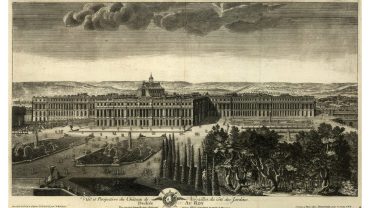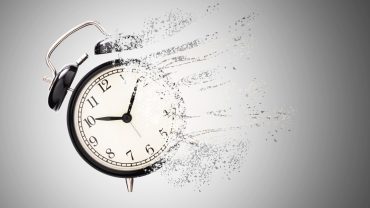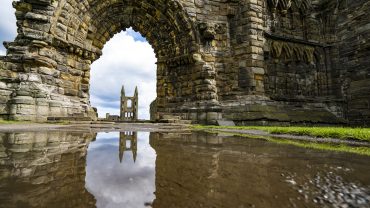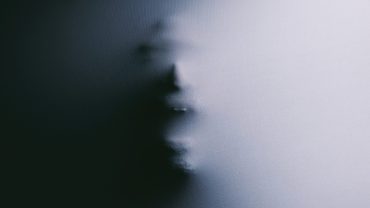In 1920, Sir Arthur Conan Doyle published a series of photographs in The Strand magazine that would capture imaginations around the world. They showed fairies and gnomes, all winged, some dancing or floating, others proffering flowers or simply standing. To the Sherlock Holmes author, they proved the existence of supernatural beings. Known as the Cottingley fairy photographs, they were taken by two young cousins, Elsie Wright and Frances Griffiths. Each of the girls were featured in the images. And both insisted there were fairies in the village of Cottingley in West Yorkshire.
Many doubted the authenticity of the photos. Some dubbed it the “Cottingley hoax.” So, were these “deep fakes” decades before the term had been coined? And, if so, how did two little girls fool the world?
Fairies in the Garden

Photo of Frances Griffiths (1907-86) taken by Elsie Wright (1901-88) (Credit: Glenn Hill / Contributor via Getty Images)
One day in July 1917, nine-year-old Frances Griffiths and her sixteen-year-old cousin Elsie Wright, returned from playing in Cottingley Beck, a stream at the bottom of their gardens. It was something they’d done many times before. Like those other times, they were told off by their parents for being covered in mud.
However, on that particular day, the girls claimed they’d only gone to the beck to “see the fairies.” And, determined to prove as much to their incredulous parents, they borrowed a camera from Elsie’s father, Arthur, and ventured back out.
Soon, they were back. Developing the photo in Arthur Wright’s darkroom, they revealed the first of what would become the Cottingley fairy photographs. It pictured Frances, her unreadable gaze towards the camera. Before her, a ring of four fairies no more than seven inches tall floated in midair, their elaborate wings on show, white dresses billowing around them, their feet bare. They appeared to be dancing.
A month later, the girls produced another photograph. This time, Elsie was pictured, smiling down at another winged creature with a gnome-like appearance, her hand held out towards it.
Arthur Wright was dubious of the images’ authenticity. He knew Elsie, a talented artist, had an understanding of both photography and retouching, and he believed she had used her knowledge to superimpose the mythical creatures using cut-outs. However, Elsie’s mother, Polly, was intrigued.
The Cottingley Fairy Photographs

Sherlock Holmes creator Sir Arthur Conan Doyle (Credit: Bettmann / Contributor via Getty Images)
Elsie Wright’s mother Polly was fascinated by mysticism and became involved with the esoteric religion of the theosophical movement. She showed the photos to leading theosophist Edward Gardner, setting in motion a chain of events which culminated in them appearing in a spiritual magazine. Which is how they came to the attention of Sherlock Holmes creator and spiritualist Sir Arthur Conan-Doyle. The author fervently believed the photos were proof that supernatural phenomena were real. And, with Arthur and Elsie’s permission, Conan-Doyle published the photos in the 1920 Christmas edition of The Strand Magazine. They would be republished around the world, causing a sensation and sparking debate as to their veracity. Many have argued that, without the involvement of Conan-Doyle, they wouldn’t have attracted so much attention.
The photographs elicited a polarised response, but Conan-Doyle was undeterred. He bought both girls cameras and, in 1921, they produced three more images. These would be the last ones and would complete the total of five Cottingley fairy photographs.
Exposing the Cottingley Hoax

Elsie Hill's letter to Geoffrey Crawley, dated 17 February 1983. (Credit: Glenn Hill / Contributor via Getty Images)
As the years passed, the Cottingley hoax began to unravel. Photography experts and sceptics pointed out anomalies and inconsistencies in the images that suggested manipulation. Yet, it wasn’t until the 1980s that Elsie and Frances spoke out.
The truth was revealed in 1983, when Elsie Wright wrote to photographic journalist Geoffrey Crawley in response to a series of articles he’d written about the affair. She admitted that the photographs were a hoax and explained how the girls had drawn the fairies on cardboard and cut them out, using hatpins to secure them in place.
Whilst admitting to the deception, Frances would maintain that they had seen fairies to her dying day. She claimed that one of the photos was real, although Elsie said all five had been altered.
Not the First Fakes

Charles Dawson's famous Piltdown Man hoax (Credit: Print Collector / Contributor via Getty Images)
It’s possible the Cottingley hoax may have been the first photography deep fake to hit the news. But it certainly wasn’t the only high profile attempt to pull the wool over the collective eyes of the scientific community. In 1912, amateur fossil hunter Charles Dawson and palaeontologist Sir Arthur Smith Woodward convinced the world they’d found the skull of the missing link in human evolution near the Sussex village of Piltdown. It wasn’t until 1953 that academics uncovered the truth: the so-called Piltdown Man was actually a concoction of human and ape bones, meticulously carved and stained to appear ancient and authentic.
The Cottingley Fairies and History Repeating

An AI deep fake and face swap in a video edit. (Credit: Tero Vesalainen via Getty Images)
The Cottingley Fairies hoax and the current rise of AI-generated fake imagery share a striking resemblance, highlighting the impact and risks that new technology can create. In 1917, the Cottingley Fairies captured the public’s imagination, leveraging the nascent field of photography to fabricate evidence of a fantastical world, much to the fascination of many – including high profile notable figures – who desperately wanted to believe.
This story underscored the potent combination of technological novelty and the allure of the supernatural or extraordinary, leading to widespread acceptance despite glaring inconsistencies.
Today, the advent of sophisticated AI and deepfake imagery presents a modern counterpart, offering tools far more powerful and accessible for creating convincing deep fakes. These technologies pose significant risks, and are capable of manipulating perceptions and spreading misinformation on a global scale, challenging the very notion of objective truth.
The Cottingley episode serves as an early cautionary tale of how new technologies can be exploited to exploit human credulity, underscoring the need for critical thinking and rigorous verification in the face of seemingly miraculous claims or evidence.
The Cottingley fairies were perhaps one of the earliest examples of that classic phrase: seeing is not always believing, especially in the digital age.
The Legacy of the Fairies of Cottingley

The 'Beck Fairies', a famous examples of image manipulation (Credit: Glenn Hill / Contributor via Getty Images)
In the end, the tale of Elsie Wright, Frances Griffiths, and the fairies of Cottingley stands as a fascinating chapter in the history of photography and deception. Their legacy is not just in the images themselves but in the broader conversation they sparked about belief, technology, and the enduring human desire for a touch of magic in the mundane. Then, as now, the creation and dissemination of false images raise questions about the use of new technology and whether we really can believe our eyes.












